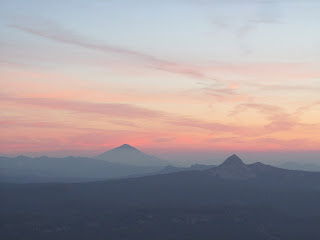Before I begin, I'd like to take a moment to say that despite the amazing experience we're having as we've dove head first into exploring the USA, we are learning just how much we appreciate (and miss) all of you - our family and friends. We wish we could share this experience with all of you, but since we can't the blog has allowed us to do this the best we can. However, it doesn't allow us to spend quality time with all of you and that is something we miss dearly. We haven't been able to attend various family events, weddings, baby showers, annual runs/bike rides, birthday celebrations and many other events still to come, which we hate. But please remember we are always thinking about you and love getting updates about what is going on in your lives. So please feel free to send us a message or give us a call and update us on your lives, like some of you already have...it keeps us connected to home, which is very important to us.
So with that said, lets take a step back in time to approximately 6,800-7,700 year ago...
 |
| An artist's depiction of Mount Mazama. |
 |
| Thanks to these events we now have Crater Lake, established in 1902 as a United States National Park. |
After a long week of work (I promise we DO work!), we headed to southern Oregon driving along the Eastern (a.k.a high desert) side of the Cascade Mountain Range. We had great views of snow capped Mt. Hood and Mt. Jefferson along the way. Not too far from the northern entrance to Crater Lake National Park we saw signs for Lava Land and then saw part of Lava Land from the road...
 |
| Where the heck are we!? This place is seismically and geothermally active with lava flows and other crazy geologic features to see! We missed our chance though, it closed for the season on October 1. |
 |
| Despite the haze from all the forest fires, we could see Shasta Mountain in California! |
The next day we moved to a different campground then hit the trails for a 5 mile strenuous hike to the highest point in the park at 8,929 ft, Mount Scott. The terrain seemed strange since it is all volcanic material with loose sand-like dirt on the trail and steep walls made up of small loose rocks intermixed with huge boulders and twisted white-bark pines strewn about. A hardy plant here and there added some color to the terrain, but the Golden-Mantled Ground Squirrels were the entertainment on this hike.
 |
| Little guys have to eat too. |
 |
| What a view! |
Feeling very satisfied from this challenging hike we decided to hit up another trail labeled as strenuous. The Cleetwood Cove Trail (2 mi round trip) is the only legal access to the lake itself since the loose volcanic rocks make it unsafe to descend toward the lake without a very well maintained trail. The views and colors of the lake as you approach it are well worth the hike back up. As an extra bonus, you can swim or fish in the lake as you wish. We passed on swimming since we didn't have our bathing suits along, but realistically I would have required a wet suit with the surface water being between 55-60 degrees!
We ended our day with a bit of education by attending Ranger Mike's last interpretive program of the season - Extreme Weather at Crater Lake. We then headed back to our campsite and enjoyed a cool evening by a warm fire.
Another unforgettable weekend.
Now it's time to plan for the next one...

No comments:
Post a Comment